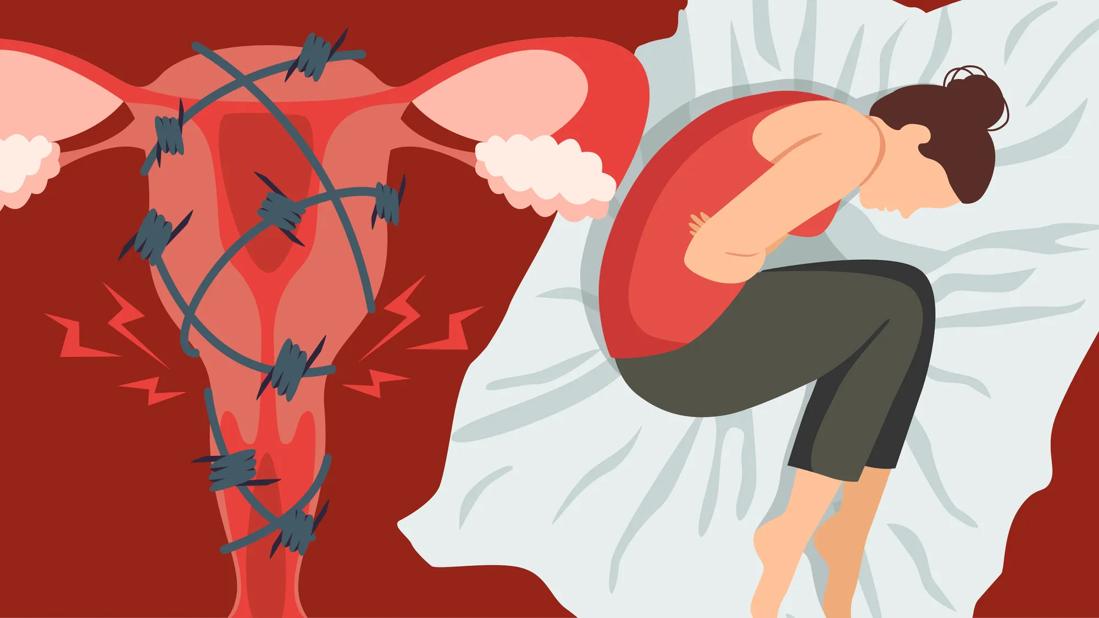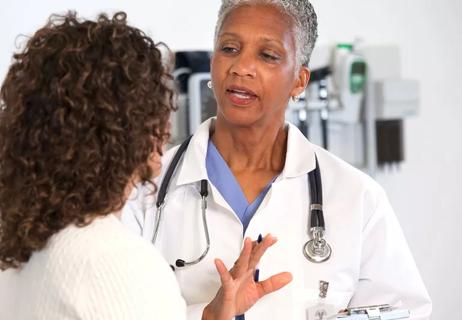This chronic condition most commonly causes pelvic pain and severe cramping during periods, but it can bring other types of pain symptoms, too

Endometriosis is a lifelong condition that can bring severe, chronic pain. But how can you tell if your pain is from endometriosis or something else? And if it is endometriosis, what can you do about it?
Advertisement
Cleveland Clinic is a non-profit academic medical center. Advertising on our site helps support our mission. We do not endorse non-Cleveland Clinic products or services. Policy
Minimally invasive gynecologic surgeon Megan Billow, DO, shares what you need to know about identifying, understanding and managing endometriosis pain.
Endometriosis pain may feel like:
“The symptoms of endometriosis can be really complex, and some people have a lot of significant pain symptoms,” Dr. Billow says. “The main symptom we see is very painful periods.”
A 2015 study on adolescents with endometriosis found that 64% had painful menstrual cycles (dysmenorrhea). But you could also experience pain:
Your level of pain depends on factors like where your endometriosis lesions grow, whether they’re affecting your nerves, how much inflammation you have and whether you’re being treated for your condition.
Remember: You may not experience all of these symptoms. But painful periods alone are enough of a symptom to speak with a healthcare provider about the possibility of endometriosis.
“You should not be incapacitated by your pain,” Dr. Billow states. “You should not be calling off work or school because of painful periods. If you’re experiencing this type of pain, it’s important to talk about it with your provider.”
Advertisement
Pelvic pain is the most common location of endometriosis pain. But where you specifically have pain will depend on where the disease develops within your body.
“When you have endometriosis, tissue similar to the lining of the uterus implants outside of your uterus,” Dr. Billow explains. “It can really implant anywhere — and that means you can feel endometriosis-related pain anywhere.”
That said, the most common location for endometriosis to develop is in the uterosacral ligament, which is located in your pelvis (behind your uterus), and the peritoneum, also known as the pelvic sidewall. This is why painful periods are so common.
But depending on where you develop endometriosis lesions, you might feel pain in your:
The location of your pain gives your healthcare provider clues about where endometriosis has developed within your body.
“Pain is oftentimes that center symptom that patients come to us with,” Dr. Billow says, “but if there’s a delay in diagnosis, it can evolve to other systemic concerns related to mental health, pelvic floor, fertility and more.”
Sometimes, you can have endometriosis but no pain symptoms. In that case, you may not learn that you have the condition until (and unless) you try to get pregnant.
“Some people don’t have any symptoms at all,” Dr. Billow confirms. “In those cases, we don’t realize that endometriosis exists until they start trying to conceive and have difficulty achieving pregnancy.”
She explains that there are four levels of endometriosis, called stages. Stage one is the most superficial, meaning lesions develop on the surface of tissues in your abdominal area and don’t progress deeper. Stage four infiltrates the deepest, affecting other tissues or organs. But your stage doesn’t necessarily dictate your pain level.
“Some people with superficial endometriosis have terrible pain,” she notes, “while some with deep endometriosis don’t really have pain.”
Some people say endometriosis pain compares to the pain of:
These are all extremely painful experiences and conditions. But these types of comparisons aren’t really fair or accurate.
“For some people, endometriosis pain is mild. For others, it’s unbearable,” Dr. Billow reiterates. “Everyone’s endometriosis pain is different, and so is everyone’s pain tolerance.”
The bottom line, she says, is that if your pain impacts your quality of life, it’s a sign that something is off — whether it’s due to endometriosis or something else.
Advertisement
Other conditions share pain symptoms with endometriosis, so it can be mistaken for issues like:
So, how can your healthcare provider tell what you’re dealing with?
“As providers, we consider a combination of factors that can give us a pretty good idea whether somebody has endometriosis,” Dr. Billow explains. Those factors include:
Struggling with how to explain your pain? If you think you might have endometriosis, Dr. Billow recommends keeping track of your symptoms and being as detailed as possible when you describe what you’re experiencing.
Advertisement
“Log all of your symptoms, including their location, timing and whether they correlate with anything else,” she encourages. “Is your pain worse during your period or ovulation? What about during intercourse or while urinating or having bowel movements? All of those things are helpful for your doctor to understand.”
The first and most important way to cope with endometriosis pain is to ask your provider what type of treatment they recommend for you.
“Endometriosis pain can be managed through hormonal suppression, birth control pills and other medications,” Dr. Billow says. “Your provider may also recommend surgery to excise, or remove, those endometriosis lesions.”
Certain lifestyle habits may also help you manage the pain that endometriosis brings:
Advertisement
Endometriosis is a chronic condition that can affect every facet of your life, so finding ways to manage your pain is vital. Talk to your provider every step of the way so they can continually reassess your needs.
“Your endometriosis treatment needs to be tailored to you — to your pain management, your reproductive health goals and your quality of life,” Dr. Billow advocates. “Nobody knows your body better than you do.”
Learn more about our editorial process.
Advertisement

Eating well can help reduce inflammation when you have endometriosis

The most comfortable sex positions minimize deep penetration

A painful, swollen abdomen from endometriosis may be managed with dietary changes

To help manage symptoms, switch to more absorbent period products, make healthy lifestyle changes and explore treatment options

Yes, you can pee with a tampon in; no, they won’t stretch out your vagina or make cramps worse!

Estrogen loss contributes to bone loss, which significantly raises your risk of osteopenia and osteoporosis

The little blue pill might help with physical arousal, but there are better treatments for low libido in women

For large breasts, wearing a bra may provide support that helps alleviate back pain — but if you’re comfortable without one, go for it!

You can improve your athletic performance over time by breaking up your workout regimen into focused cycles

The little blue pill might help with physical arousal, but there are better treatments for low libido in women

Sleep issues and certain foods can lead to an early morning headache